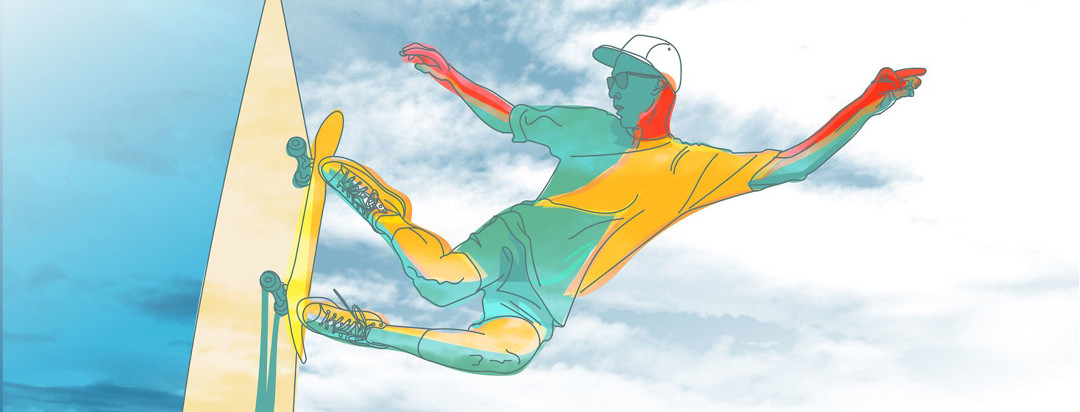Melanoma, a Pain in the Neck
I remember loving baseball hats as a child. I played little league baseball and nothing was better than getting my uniform. Back in the day that meant baggy flannels with stitched-on lettering, stirrup socks, and real, metal-spiked shoes. To top it off, I would get my brand new wool hat with that perfect elastic fit. Those were great days. I would wear my new hat endlessly; to play, to bed, to church (nope) and to school (nope, again).
My hat was protecting me from (most) skin cancer on my face
I still love my baseball hats. Over the years, they changed to mesh snapbacks and then to polyester fitted. It didn’t matter. Not only did they look cool, they also served as sun protection for part of my face and scalp. Little did I know that my blonde-haired, freckled-faced head was being shielded in large part, from dangerous rays. Some hats provided better protection than others, but overall they served me well, except for one thing. My neck was left completely exposed.
Head and neck melanoma
I spent California summers (and winters for that matter) with my neck unprotected. These days I still wear my baseball hats but make it a point to lather my neck with sunscreen, but evidently increasing numbers of young men and boys are not. According to a recent article in Physician’s Weekly, the incidence of head and neck melanomas is on the rise with our lads. These melanomas have risen by more than 50% in North America over the past two decades.1
Skin cancer prevention for young men
According to the article, there needs to be a stronger focus on this demographic. “The literature has always focused on melanoma and females and tanning. Our study is showing that we should not just target young girls” noted senior author Nosayaba Osazuwa-Peters of the Saint Louis University School of Medicine in Missouri.1 Why are young men and boys getting melanoma on their heads and necks at alarming rates?
Researchers in the article suspect that this is due in part that young males have tended to wear much shorter hair than their female counterparts. This exposure leaves them more vulnerable to ultraviolet rays, which can lead to melanoma.1 I would add that wearing the aforementioned hat without sunscreen is also contributing to incidences of melanoma.
The hat coolness factor
Most of the literature that I have read regarding safe sun practices have recommended wearing wide-brimmed hats. Let’s be honest here. As a young man, I would not have been caught dead wearing a beachcomber-type straw cap. My thoughts would have gone to older gents with black dress socks, sandals, Hawaiian shirts, over-sized sunglasses, and zinc covered noses. For me, the lack of coolness would have outweighed its sun protection value.
Is there a solution for more protective hats?
So, what is the solution? I don’t see the baseball hat changing any time soon. It has remained essentially the same for over 100 years. I am not sure that major league pitchers and fielders would want to chase fly balls and grounders with those hats flapping in the wind. Yet, the market has been somewhat responsive. There are many fashionable sun protective hats now on the market. Many have SPF protective values and wider brims in different styles. But would young men wear them?
Would Major League Baseball take the lead?
My guess is that if professionals wore modified caps with protective material flaps that covered the ears and neck, young people would at least consider them. Pro teams have significantly modified batting helmets for better protection against pitched balls, so who knows? Maybe one day, little leaguers will put on baseball caps that not only shield a ballplayers’ eyes from the sun but his or her neck from dangerous ultraviolet rays.

Join the conversation